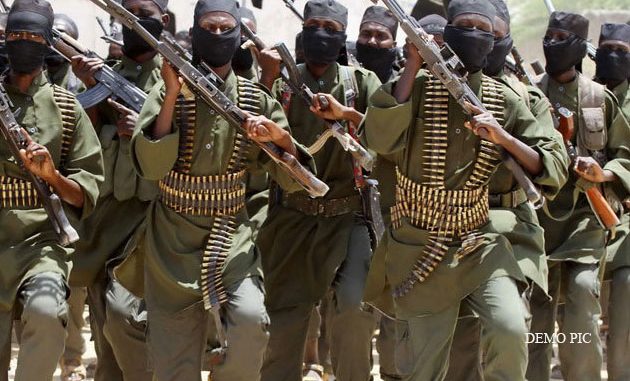
On March 18, 2021, Russia hosted a meeting of the extended "Troika"on the progress of a negotiated settlement and permanent ceasefire in Afghanistan which is now in its 20th year of war. Representatives from Russia, China, the United States and Pakistan met with representatives of the Government of the Islamic Republic of Afghanistan, Afghanistan's High Council for National Reconciliation along with representatives of the Taliban and other high-profile Afghani political figures. The extended Troika came up with a series of ten issues on which they agreed as follows:
1.) We acknowledge the widespread and sincere demand of the Afghan people for a lasting and just peace and an end to the war and confirm that a sustainable peace can only be achieved through a negotiated political settlement.
2.) We call on all parties to the conflict in Afghanistan to reduce the level of violence in the country and on the Taliban not to pursue a Spring offensive, so as to avoid further casualties and to create an environment conducive to reaching a negotiated political settlement.
3.) As stated in the UNSC resolution 2513 (2020), we do not support the restoration of the Islamic Emirate and we call on the Government of the Islamic Republic and the High Council for National Reconciliation to engage openly with their Taliban counterparts regarding a negotiated settlement.
4.) We urge participants in the intra-Afghan negotiations to engage immediately in discussions on fundamental issues to resolve the conflict, including the foundations of the future peaceful and stable Afghan State, the content of a political roadmap leading to an inclusive government, and the modalities of a permanent and comprehensive ceasefire. At this pivotal moment, our four states call on the parties to negotiate and conclude a peace agreement that will bring an end to over four decades of war in Afghanistan.
5.) We strongly advocate a durable and just political resolution that will result in the formation of an independent, sovereign, unified, peaceful, democratic and self-sufficient Afghanistan, free of terrorism and an illicit drug industry, which contributes to the creation of pull factors for the voluntary, sustainable and expeditious return of Afghan refugees, stability and global security.
6.) We call on all Afghans including the Government of the Islamic Republic and the Taliban to ensure that terrorist groups and individuals do not use Afghan soil to threaten the security of any other country.
7.) We reaffirm that any peace agreement must include protections for the rights of all Afghans, including women, men, children, victims of war, and minorities, and should respond to the strong desire of all Afghans for economic, social and political development including the rule of law.
8.) We encourage all concerned countries to support the Afghan people and contribute to a lasting peace in the interest of all. We reaffirm our commitment to mobilize international political and economic support for a post political settlement Afghanistan.
9.) We appreciate the long-standing support of the State of Qatar to facilitate the peace process, and we support the continuation of discussions between the parties’ negotiating teams in Doha, which began in September 2020 and which have resulted in meaningful progress toward a political settlement.
10.) We recognize and welcome all international efforts that are underway to facilitate and support a negotiated settlement as soon as possible. We note that the UN Secretary General Gutteres’ appointment of Mr. Jean Arnault as his personal envoy on Afghanistan and regional issues. We welcome the UN playing a positive and constructive role on the Afghan peace and reconciliation process.
Let's look at the current situation in Afghanistan as well as some historical information. Here is a map showing which parts of Afghanistan are controlled by government and Taliban and the significant areas that are still contested:
Currently, the Taliban controls 19 percent of the nation and Afghani government forces control 33.7 percent of the nation with the remainder (47.3 percent) being contested.
According to a December 2020 paper by the Watson Institute of International and Public Affairs at Brown University, the 2017 relaxation of its rules of engagement and air strikes in an effort to gain the advantage at the bargaining table, civilian deaths in Afghanistan have dramatically increased. Here is a graphic showing the number of U.S. Central Command air strike sorties and weapons releases from 2011 until the February 2020 peace accord between the United States and the Taliban:
Note that the U.S. Central Command stopped publishing its monthly summaries of air strikes in Afghanistan in March 2020.
Here is a graphic showing the number of Afghani civilians killed by pro-government airstrikes between 2006 and 2020:
Here is a table showing the casualties to October 2019 (the latest analysis available):
Notice that the number of civilian casualties that have been killed in the conflict has now exceeded the number of opposition fighters killed. According to the United Nations Assistance Mission in Afghanistan (UNAMA), here is the total number of civilians killed and injured between 2009 and 2020:
Here is the latest civilian casualty data for 2020:
During 2020, 43 percent of Afghani civilian casualties were women and and children, up by 13 percent on a year-over-year basis. As well, in 2020, the Afghan National Army including the Afghan Air Force was responsible for the highest number of civilians casualties attributed to their actions since UNAMA began to document civilian casualties in 2009.
While the extended Troika has made proclamations on the future of Afghanistan, it is quite clear that the beleaguered Afghani civilian population is unlikely to experience significant improvements in their lives and livelihoods over the short- and medium-term, particularly given the Taliban's ability to retain and retake territory. With over 40 years of on-again, off-again war, the war-torn quagmire that is Afghanistan is a long way from any semblance of stability.
You can publish this article on your website as long as you provide a link back to this page.






Be the first to comment